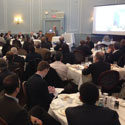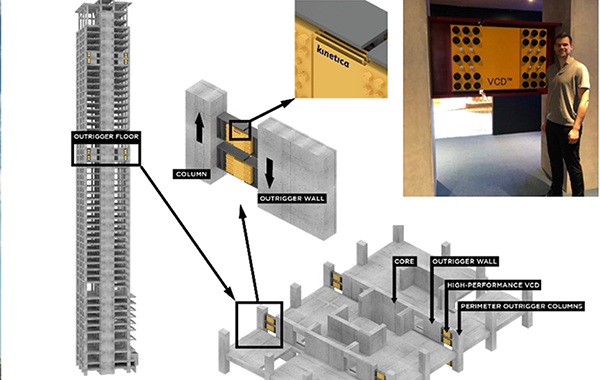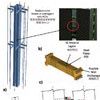Filter by
Kinetica Dynamics, Technical Advisor | Toronto, Canada

Dr. Constantin Christopoulos is an expert in seismic isolation and supplemental damping devices and led the development of the Viscoelastic Coupling Damper (VCD) as a Professor of Civil Engineering and the Director of Structures Laboratories at the University of Toronto. He is also the holder of the Canada Research Chair in Seismic Resilience of Infrastructure. He is the author of more than 100 technical papers, two major textbooks, and the co-inventor on several international patents. He has served as a technical advisor to Kinetica on numerous high-profile building structures looking to implement the VCD for improved seismic and wind performance.

Annual Conference, Presenter (Shanghai 2012; Chicago 2019)
Annual Conference, Session Chair (Shanghai 2014)
Innovation Conference, Speaker (Shenzhen 2019)

CTBUH Canada Hosts Event on Imports and Acquisitions
05 November 2014

Building Movement and Damping Workshop, Shanghai 2014
16 September 2014

29 June 2021
Michael Montgomery, Kinetica; Luis Ardila & Constantin Christopoulos, University of Toronto
Solid Viscoelastic Coupling Dampers (VCDs) provide distributed damping that improves the dynamic performance of tall buildings for both wind-storms and earthquakes for all amplitudes of...
You must be a CTBUH Member to view this resource.

16 September 2014
Design of a Slender Building with High-Performing VE Dampers
Michael Montgomery, Kinetica; Kevin MacLean & Tibor Kokai, Read Jones Christoffersen; Constantin Christopoulos, University of Toronto
A slender tower in downtown Toronto was identified early on in the design process as having wind dynamic motion issues and additional structural damping was...
You must be a CTBUH Member to view this resource.

19 September 2012
Novel Coupling Damper System for Enhanced Performance of Tall Buildings
Constantin Christopoulos, University of Toronto; Michael Montgomery, Kinetica Dynamics
As high-rise buildings become taller and more slender, dynamic behavior becomes a critical design consideration. Wind loads cause large vibrations which can be perceived by...
You must be a CTBUH Member to view this resource.
Filter by

29 June 2021
Michael Montgomery, Kinetica; Luis Ardila & Constantin Christopoulos, University of Toronto
Solid Viscoelastic Coupling Dampers (VCDs) provide distributed damping that improves the dynamic performance of tall buildings for both wind-storms and earthquakes for all amplitudes of...

16 September 2014
Design of a Slender Building with High-Performing VE Dampers
Michael Montgomery, Kinetica; Kevin MacLean & Tibor Kokai, Read Jones Christoffersen; Constantin Christopoulos, University of Toronto
A slender tower in downtown Toronto was identified early on in the design process as having wind dynamic motion issues and additional structural damping was...

19 September 2012
Novel Coupling Damper System for Enhanced Performance of Tall Buildings
Constantin Christopoulos, University of Toronto; Michael Montgomery, Kinetica Dynamics
As high-rise buildings become taller and more slender, dynamic behavior becomes a critical design consideration. Wind loads cause large vibrations which can be perceived by...
Fields with an asterisk (*) next to them are required.
View our privacy policy